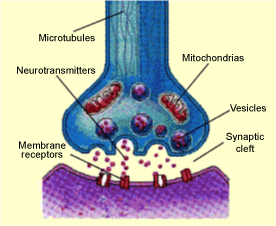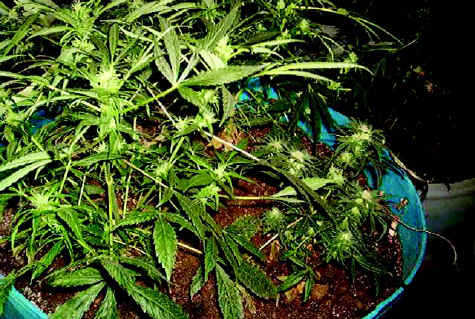September 25th, 2009 · No Comments
 Approximately 2 million Americans currently use cocaine because of the temporary euphoria effect it provides. Unfortunately this has contributed to making it one of the most dangerous and addictive drugs in the country. Cocaine addiction is known to cause severe biological and behavioral problems that may or may NOT be changed!
Approximately 2 million Americans currently use cocaine because of the temporary euphoria effect it provides. Unfortunately this has contributed to making it one of the most dangerous and addictive drugs in the country. Cocaine addiction is known to cause severe biological and behavioral problems that may or may NOT be changed!
Researchers at the University of Missouri in the Dept of Electrical and Computer Engineering are utilizing computational models to study how the brain’s chemicals and the connections between neurons react to cocaine addiction. The findings could have an effect on future drug treatment.
Cocaine addicts get such a strong connection in the brain from the decision-making center to the pleasure center that it simply makes the addict keep seeking the use of cocaine.
[Read more →]
Tags: Street Drugs
Recent research by David Zald at Vanderbilt and published by the Journal of Neuroscience shows that people that have less of a particular type of dopamine receptor may lead them to taking more risks including the use of drugs.
Dopamine has long been known to play an important role in how we experience rewards from a variety of natural sources, including food and sex, as well as from drugs such as cocaine and amphetamine. Previous research has shown that individuals differ in both their number of dopamine receptors and the amount of dopamine they produce, and that these differences may play a critical role in addiction. Zald and his colleagues set out to explore the connection between dopamine receptors and the novelty-seeking personality trait.
“We’ve found that the density of these dopamine autoreceptors is inversely related to an individual’s interest in and desire for novel experiences,” stated David Zald. “The fewer available dopamine autoreceptors an individual has, the less they are able to regulate how much dopamine is released when these cells are engaged. Because of this, novelty and other potentially rewarding experiences that normally induce dopamine release will produce greater dopamine release in these individuals.”
[Read more →]
Tags: News - Addiction and Alternative Health
 The term “drug addiction” is a disturbing word that brings to mind other words with equally unpleasant associations such as hopeless, out-of-control, desperate, inadequate, failure—you can no doubt add many more. Part of the reason the word is so upsetting is that for most people who try to overcome drug addiction, treatment options have been limited and often ineffective.
The term “drug addiction” is a disturbing word that brings to mind other words with equally unpleasant associations such as hopeless, out-of-control, desperate, inadequate, failure—you can no doubt add many more. Part of the reason the word is so upsetting is that for most people who try to overcome drug addiction, treatment options have been limited and often ineffective.
In fact, “conventional” drug addiction treatment programs have a success rate of 25% or less! One of the reasons I believe this to be the case is that these “conventional” programs do not adequately address the physiological basis of substance abuse; more specifically biochemical imbalances that occur in the brains of people with substance abuse issues. The good news is that solutions exist that do address these imbalances and offer hope to those seeking a more permanent solution.
According to Dr. C.E. Gant, author of “End Your Addiction Now”, “substance abuse problems are the result of biochemical imbalances that disrupt the normal workings of brain cells”. These imbalances are particularly important in the biochemistry of brain cells, or neurons. Neurons produce chemical substances called neurotransmitters (the brain’s messengers), and they control virtually every aspect of your life by communication with other cells.
Four key groups of “brain messengers” are related specifically to substance abuse. These particular messengers are vital to our ability to experience pleasure and satisfaction. The healthy functioning of these neurotransmitters is vital to our well-being and our ability to function in a productive manner. The four groups of neurotransmitters include endorphins and enkephalins, serotonin, GABA, and catacholamines.
[Read more →]
Tags: Drug Addiction Alternative Treatment
Researchers have generally known that people with ADHD are more likely than others to smoke cigarettes and abuse alcohol, marijuana, cocaine and other drugs.
[Read more →]
Tags: Drugs and Brain Disorders · Street Drugs

Marijuana is the most frequently used illegal substance in many countries, including the United Kingdom and the United States and it seems to increase the chance of becoming psychotic, researchers report in an analysis of past research that brings up the old issue of whether pot is dangerous.
The new review suggests that even infrequent use of marijuana could raise the small but real risk of this serious mental illness by 40 percent.
Doctors have long suspected a connection and say the latest findings underline the need to highlight marijuana’s long-term risks. The research, paid for by the British Health Department, was published recently in the medical journal The Lancet. (thelancet.com)
“The available evidence now suggests that cannabis is not as harmless as many people think,” said Dr. Stanley Zammit, one of the study’s authors and a lecturer in the department of psychological medicine at Cardiff University.
[Read more →]
Tags: Marijuana Addiction
When tobacco is smoked, nicotine is absorbed by the lungs and quickly moves into the bloodstream and then reaches the brain within 8 seconds! Nicotine also acts directly on the heart to change heart rate and blood pressure and also on the nerves that control respiration to change breathing patterns.
[Read more →]
Tags: Smoking - Nicotine Addiction
Speed, meth, chalk, crystal, ice, glass. These are all names for the drug methamphetamine. It comes in many different forms and is snorted, swallowed, injected, or smoked. The smokable form is known as “ice” or “crystal,” due to its appearance.
Meth is a powerful street drug. It acts by changing how the brain works. It also speeds up many functions in the body. It has a chemical structure that is similar to another drug called amphetamine. Methamphetamine can cause lots of harmful things, including inability to sleep, paranoia, aggressiveness, and hallucinations.
How Does Methamphetamine Cause its Effects?
[Read more →]
Tags: Drugs and Brain Disorders · Street Drugs
Just as we turn down the volume on a radio that is too loud, the brain adjusts to the overwhelming surges in dopamine (and other neurotransmitters) by producing less dopamine or by reducing the number of receptors that can receive and transmit signals. As a result, dopamine’s impact on the reward circuit of a drug abuser’s brain can become abnormally low, and the ability to experience any pleasure is reduced. This is why the abuser eventually feels flat, lifeless, and depressed, and is unable to enjoy things that previously brought them pleasure. Now, they need to take drugs just to bring their dopamine function back up to normal. And, they must take larger amounts of the drug than they first did to create the dopamine high – an effect known as tolerance.
How does long-term drug taking affect brain circuits?
[Read more →]
Tags: Drugs and Brain Disorders
Drugs are chemicals. They work in the brain by tapping into the brain’s communication system and interfering with the way nerve cells normally send, receive, and process information. Some drugs, such as marijuana and heroin, can activate neurons because their chemical structure mimics that of a natural neurotransmitter. This similarity in structure “fools” receptors and allows the drugs to lock onto and activate the nerve cells. Although these street drugs mimic brain chemicals, they don’t activate nerve cells in the same way as a natural neurotransmitter, and they lead to abnormal messages being transmitted through the network.
Other drugs, such as amphetamine or cocaine, can cause the nerve cells to release abnormally large amounts of natural neurotransmitters or prevent the normal recycling of these brain chemicals. This disruption produces a greatly amplified message, ultimately disrupting communication channels. The difference in effect can be described as the difference between someone whispering into your ear and someone shouting into a microphone.
How do drugs work in the brain to produce pleasure?
All drugs of abuse directly or indirectly target the brain’s reward system by flooding the circuit with dopamine. Dopamine is a neurotransmitter present in regions of the brain that regulate movement, emotion, cognition, motivation, and feelings of pleasure. The over stimulation of this system, which rewards our natural behaviors, produces the euphoric effects sought by people who abuse drugs and teaches them to repeat the behavior.
[Read more →]
Tags: Drugs and Brain Disorders · Street Drugs
 Approximately 2 million Americans currently use cocaine because of the temporary euphoria effect it provides. Unfortunately this has contributed to making it one of the most dangerous and addictive drugs in the country. Cocaine addiction is known to cause severe biological and behavioral problems that may or may NOT be changed!
Approximately 2 million Americans currently use cocaine because of the temporary euphoria effect it provides. Unfortunately this has contributed to making it one of the most dangerous and addictive drugs in the country. Cocaine addiction is known to cause severe biological and behavioral problems that may or may NOT be changed!  The term “drug addiction” is a disturbing word that brings to mind other words with equally unpleasant associations such as hopeless, out-of-control, desperate, inadequate, failure—you can no doubt add many more. Part of the reason the word is so upsetting is that for most people who try to overcome drug addiction, treatment options have been limited and often ineffective.
The term “drug addiction” is a disturbing word that brings to mind other words with equally unpleasant associations such as hopeless, out-of-control, desperate, inadequate, failure—you can no doubt add many more. Part of the reason the word is so upsetting is that for most people who try to overcome drug addiction, treatment options have been limited and often ineffective. 